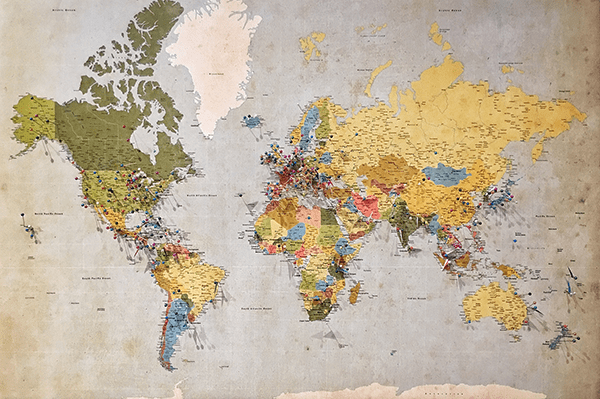The second panel at our Annual National Security Conference discussed the different hot spots around the world and areas for concern when it comes to arms control and nonproliferation. The panel consisted of Dr. Robert Litwak, Senior Vice President and Director of International Security Studies at The Wilson Center; Kelsey Davenport, Director of Nonproliferation Policy at the Arms Control Association; and Dr. Toby Dalton, Co-Director and Senior Fellow for the Nuclear Policy Program at the Carnegie Endowment for International Peace.
Kelsey Davenport defined active nuclear terrorism, stating how different it is from most people’s perceptions derived from pop culture, and places these acts into three categories. The first type of act would be the detonation of a nuclear weapon, either if the weapon is stolen from one of the nuclear weapon states, or a particular device actually assembled by a terrorist organization. The impact from this would be impossible to calculate, from lives lost to disruption of economies, it certainly would be an historically altering event. Because of policies set forth during the Obama administration designed to mitigate risks identified with ground nuclear terrorism, usable nuclear materials and associated weapons have decreased significantly.
The second category of activity would be the detonation of a dirty bomb, which is defined as mixing a radioactive source with a conventional explosive. Davenport said this scenario is more likely than the first, but would have less of an economic and environmental impact because of its smaller range of destruction. The third area Davenport spoke about, which she described as the most likely scenario and receiving the least attention, is a terrorist attack on a nuclear power reactor. This would be a highly disruptive event due to the fact that 44 countries currently have these reactors, and several other countries, like Taiwan, are pursuing nuclear power programs.
Dr. Litwik spoke on the perceived two greatest threats in terms of nonproliferation, North Korea and Iran. Comparatively, North Korea and Iran couldn’t be more different. With North Korea,he said that it’s hard to measure their impact. It’s GDP is estimated to be approximately $40 billion annually, which is the equivalent of the GDP in Dayton, Ohio. However, North Korea has an arsenal which is half the size of Great Britain’s. Litwik stated that Iran is in many ways a real country, where North Korea is not. There are domestic politics, more free political discourse, and has an estimated GDP of $150 billion. He referred to Iran as a little power, stating they have a limited nuclear weapons capability, however, what makes them a threat is Iran’s capabilities to enrich uranium for future weapon production.
Dr. Dalton then spoke on the nuclear crisis in South Asia. He touched on this being the 20th year that both India and Pakistan possessed these types of weapons. Both countries began obtaining weapons because of perceived threats from neighboring countries, for India from China and for Pakistan from India. Where there has been conflict between the regions, it’s the fear of escalating retaliation that is of a concern for the increase of building tactical nuclear weapons today. Both countries have used escalating attacks in the past to “win” the battle they have pursued.
All three panelists posed grave scenarios, but stated that civil diplomacy, comprehensive reform, and an issues-based transactional approach would help deter the growth and spread of destructive nuclear weapons and deter nuclear terrorist attacks.
